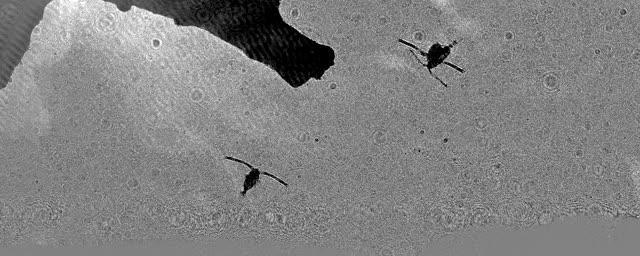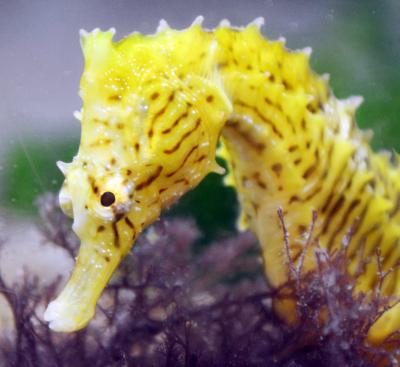The holography technique revealed that the seahorse's head is shaped to minimize the disturbance of water in front of its mouth before it strikes. Just above and in front of the seahorse's nostrils is a kind of "no wake zone," and the seahorse angles its head precisely in relation to its prey so that no fluid disturbance reaches it.
Other small fish with blunter heads, such as the three-spine stickleback, have no such advantage.
Gemmell said that the unique head shape of seahorses and their kin likely evolved partly in response to pressures to catch their prey. Individuals that could get very close to prey without generating an escape response would be more successful in the long term.
"It's like an arms race between predator and prey, and the seahorse has developed a good method for getting close enough so that their striking distance is very short," he said.
Seahorses feed by a method known as pivot feeding. They rapidly rotate their heads upward and draw the prey in with suction. The suction only works at short distances; the effective strike range for seahorses is about 1 millimeter. And a strike happens in less than 1 millisecond. Copepods can respond to predator movements in 2 to 3 milliseconds — faster than almost anything known, but not fast enough to escape the strike of the seahorse.
Once a copepod is within range of a seahorse, which is effectively cloaked by its head shape, the copepod has no chance.
Gemmell said that being able to unravel these interactions between small fish and tiny copepods is important because of the role that copepods play in larger ecosystem food webs. They are a major source of energy and anchor of the marine food web, and what affects copepods eventually affects humans, which are sitting near the top of the web, eating the larger fish that also depend on copepods.
Gemmell, Buskey and Sheng published their research this week in Nature Communications.

Seahorses have heads perfectly shaped to sneak up on copepods without alerting them, because the area just above and forward of their nostrils produces no fluid disturbance. This video shows a seahorse sneaking up and capturing a copepod.
(Photo Credit: Brad Gemmell, Ed Buskey and Jian Sheng.)

The dwarf seahorse, Hippocampus zosterae, has a head perfectly shaped to sneak up on fast moving copepods.
(Photo Credit: Brad Gemmell)
Source: University of Texas at Austin